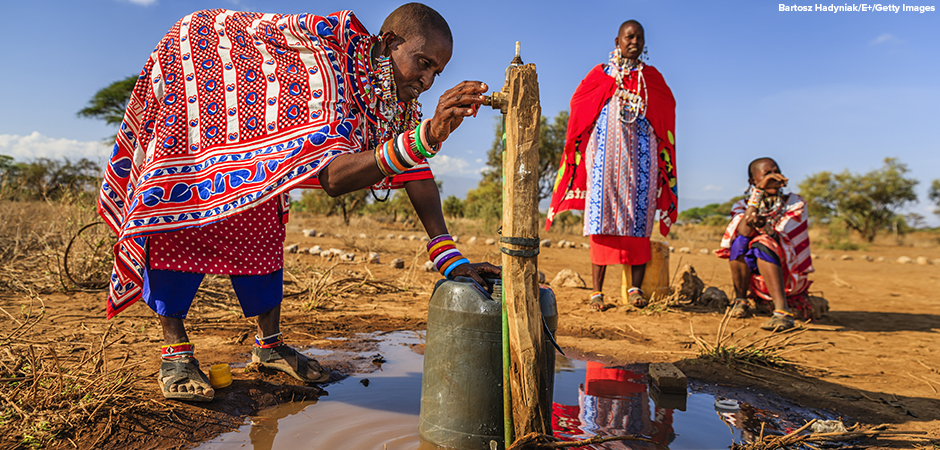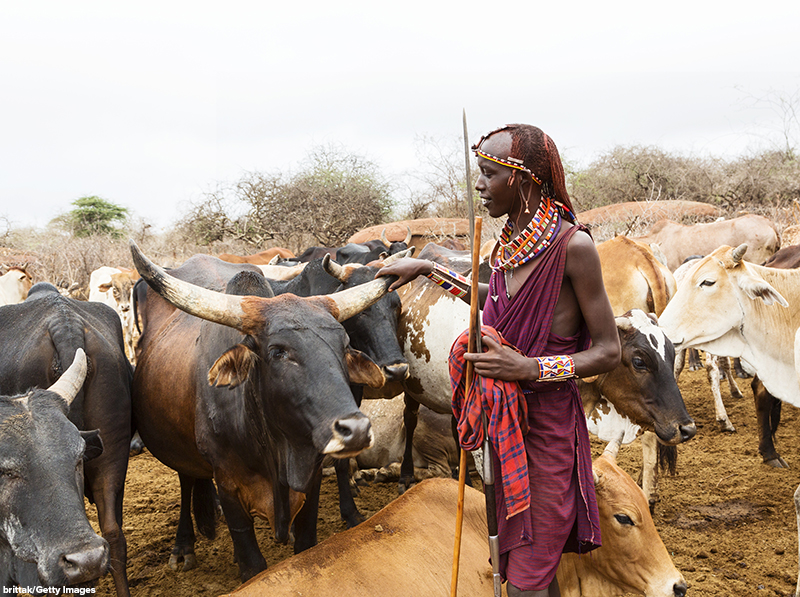
Kenya is a country in East Africa that is roughly the land area of the state of Texas but with almost two times as many inhabitants. The country’s varied geography includes dry regions in its northeast and a fertile highland region in the west and south and along its Indian Ocean coast.
Agriculture is a key industry in Kenya. Over 70 percent of its rural population is employed on farms, ranches, and other agricultural industries. Around 25 percent of the nation’s Gross Domestic Product comes from goods such as tea, coffee, corn, and livestock. However, for the past ten years, drought conditions have challenged Kenya’s economy.
The Worst Drought in Forty Years
From 2020 to 2023 Kenya has experienced a major drought, or an extended time of dryness with little rainfall. This drought has turned into the worst one experienced by the country in over forty years. There are two rainy seasons in Kenya, one in Spring and one in Autumn. However, over the past four years these seasonal rains did not come. This unusually long dry period has severely weakened Kenya’s agricultural industry and hurt many small farmers.
Such a long drought has also dried up Kenya’s water resources. Farm workers now often must travel long distances to fetch water. Even when they find it, this water is often from unsanitary sources, which has increased the risk of waterborne diseases. Over time, crops have failed, and herds of livestock have died. As a result, almost two million people in Kenya are struggling to find enough food. This is about 12 percent of the nation’s total population. Children are especially vulnerable, with many suffering from malnutrition and illness due to the lack of food and clean water.
The Maasai People of Kenya
One of the communities in Kenya hardest hit by the drought are a group of nomadic herders known as the Maasai. The Maasai live primarily in southern Kenya, though they move along with their herds through the central and northern parts of the country as well. Cattle are central to the Maasai way of life. The Maasai herd cattle for their milk, meat, fat, and even blood. Cattle are also deeply significant in Maasai culture. They are a symbol of wealth and are exchanged in ceremonies such as weddings.
The Kenyan drought has hit the Maasai especially hard. Grazing has become scarce and prices for livestock feed have become too expensive. Without a way to feed them, herds of cattle have been devastated and millions of these animals have died. This has left the Maasai without their main source of food and income.

The Maasai Make Changes
Their traditional way of life in jeopardy, the Maasai have been forced to adapt. One of the most significant changes has been the adoption of fish farming as a source of income. Historically, fish were not a regular part of the Maasai diet. The Maasai considered fish inedible for many reasons, especially for their resemblance to snakes. However, the sheer scale of the livestock losses has forced the Maasai to consider new alternatives.
Local governments in Kenya have supported these efforts by helping Maasai families establish fish farms. These programs have provided materials such as pond liners, fish feed, and young tilapia fish. After six months, many Maasai families were able to harvest their first catch of fish. They use these fish for food and sell them. This money has helped them secure other sources of food to survive the drought. Fish farming has now become a growing industry among the Maasai, helping them cope with the effects of climate change.
In addition to fish farming, many Maasai have also turned to camels as a source of income. Camels are more resilient to drought conditions. They can survive on far less water than cattle and eat shrubs that are more readily available in dry regions. While camels are more expensive to buy than cattle, their ability to withstand arid conditions has made many Maasai see them as a worthwhile investment. When cattle are needed for food or ceremonies, a mature camel can be sold to purchase the cattle the Maasai prefer.
